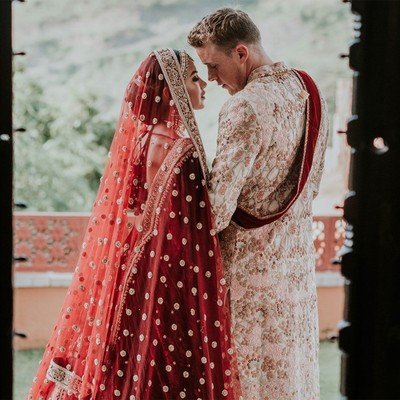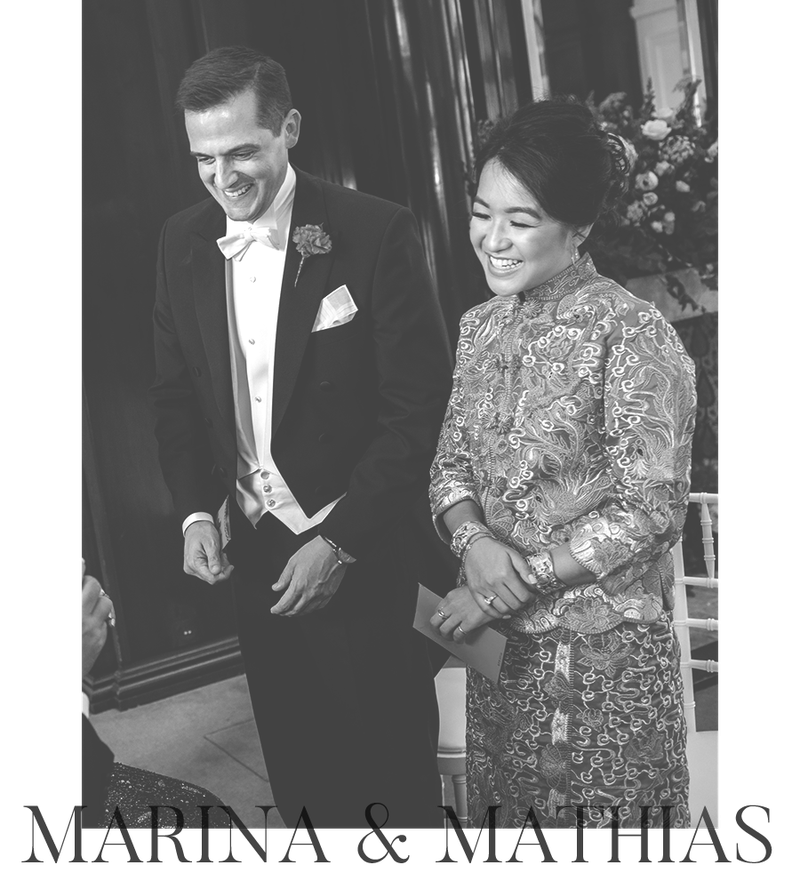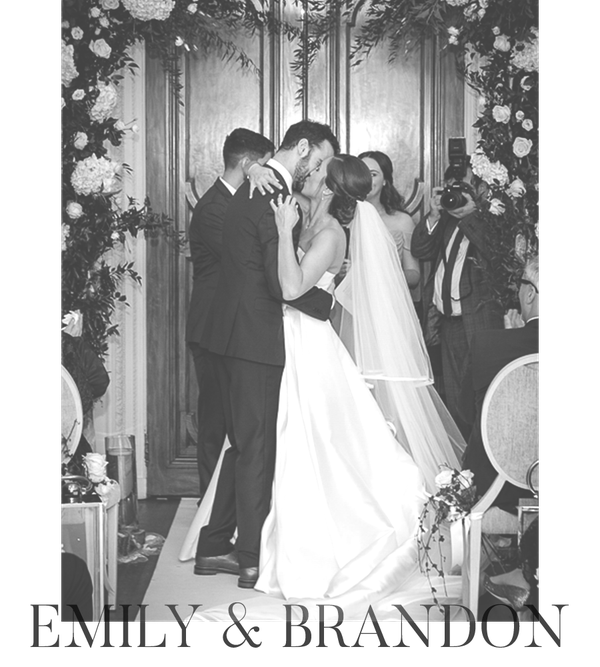
How To Have An Interfaith Wedding Ceremony
What is an interfaith wedding?
An interfaith wedding is where a couple with different religions get married and try to recognise both religions during their wedding day. It’s about merging their lives, while at the same time respecting both of their individual cultures and beliefs – especially during the ceremony. Many couples choose to follow tradition throughout the entire day, and some choose not to.
If you’re from different religious backgrounds, what are some of the first things to consider?
Every interfaith wedding is different and can be tailored to suit the couple. However, as an experienced wedding planner, I’ve learnt communication is always key. Take into consideration both sides of the family (and their faiths) so you can incorporate both equally – favouring one side over the other can cause awkwardness. Take the time to sit down and discuss your family’s views and expectations so everything is clear from the get-go – this way you can compromise and come to an arrangement that everyone is happy with.
Just remember to be open and honest with what you want from your wedding day. Talk with the clergy from both religions and discuss what hopes you have for the day itself – from the ceremony right through to the reception. It can be complex, so give yourselves plenty of time – this isn’t a part of the planning process you want to rush.
What are some of the ways to respect each other’s religion and that of your guests?
In the past, we’ve created programmes for interfaith weddings that explain each section so everyone has a clear understanding of what is happening. The more information guests are given, the more comfortable they’ll feel. You could even put together a wedding website that lays out the traditions of each religion and what you will be including. It might also be useful to include any dress-code requirements guests need to account for in advance.
Who officiates an interfaith ceremony?
Do your research to find the right professional for the job – you want someone who is deeply experienced in conducting interfaith weddings. You can have two officiants working in tandem, a celebrant to cover both religions, or alternatively you could have a legal ceremony followed by a religious blessing. If you do choose to have two officiants, you will need to ensure there are open lines of communication between them. They could also help explain to your guests what is happening as your ceremony unfolds – joining two faiths is an occasion you want to mark appropriately and in a memorable way.
Where can an interfaith ceremony take place?
An interfaith ceremony can take place anywhere you wish, but it depends on whether you’re having a religious or celebrant-led ceremony. If you are having the latter, you can get married anywhere – you could perhaps consider a destination wedding or somewhere that is a neutral area for all parties. Otherwise, you can host the legal ceremony as the first part followed by a religious blessing to cover all the bases.
Will our ceremony be legal?
This is completely up to you. If you use a licensed registrar or marry in a way that is recognised as legal, then yes. However, if it is deemed not legally binding, you can have a separate legal ceremony either before or after the main day.
What are some interesting ways to incorporate different traditions?
As wedding planners, we’ve been privy to many beautiful interfaith weddings, and over the years, have seen plenty of creative ways to offer a nod towards different religious. For instance, you could light a unity candle to represent the ‘togetherness’ you have as a couple. We also love the idea of writing personalised wedding vows – they’re an opportunity to include how you will live your married life together according to your beliefs. You can also fuse your traditions and faiths with your wedding design – be it through the décor, flowers and general styling.
Visit KristinaKempton.com for more guidance on interfaith weddings.
Two SL readers share more about their interfaith weddings…
Radio presenter & journalist Marina Lai-Lentz says…

“Mathias is from Luxembourg, while I was born and raised in London to a Malaysian mother and Cantonese father. His family are catholic, and mine are a combination of atheist and Buddhist, so everyone had a lot of questions about what our wedding would look like. We knew we wanted both sides to come together, so people could understand more and have a great time doing it. Surprisingly I’d been the one wanting to get married in a church – my vision of a church full of white flowers was vetoed right away by my mother who explained that in the Asian culture, white flowers are only for funerals. My dad didn’t like the idea of walking up a long aisle and my husband felt a church wedding just wasn’t who we are. So, we agreed we would do it our own way, in a setting that embraced both our cultures.
“We had our civil ceremony at the BMA House in London and it was officiated by a humanist celebrant who personalises weddings to all beliefs. It took place in two parts. The first half was a Malaysian Cantonese tea ceremony to reflect each of my parent's backgrounds before we had a break to hand out personalised macaroons with the Chinese character of happiness on them – a traditional European sweet treat to demonstrate our union. The second half of the ceremony was a traditional Western one, where I walked down the aisle accompanied by my dad, and Mathias and I wrote our own vows and exchanged rings as a symbol of our commitment to one another.
“Shortly after that, our guests boarded a red double-decker bus – symbolic of my own roots having been born and raised in London – to take them to the evening part of the celebration at the Natural History Museum. Our dinner was a buffet where each stand represented a different country that held a place in our hearts. The Chinese stand represented my dad's heritage, as well as the place where Mathias and I met (in Shanghai); we also had traditional dim sum, dumplings and duck pancakes. The Malaysian stand represented my mum's roots and we had spiced delicacies and seafood. The British one mimicked the style of Borough Market, with my favourite scotch eggs and British roast beef with Yorkshire puddings. My husband's family is in the brewing business, so the Luxembourg stand was the bar!
“As a souvenir of our day, we left chopsticks on the table for people to take home. Chopsticks come in pairs, don't work alone and last forever, so we felt like that was an apt way to remember it.”
SheerLuxe reader Emily Henders says…

“Having been raised Jewish, incorporating Judaism into my wedding was always going to be important to me. However, when Brandon – who was raised catholic – asked me to marry him, I knew we weren’t going to have a traditional Jewish wedding. We also lived in Canada with all his family, while all of mine were in the UK. In the end, we decided on a British wedding in January 2018. Being Jewish, we couldn't get married in a church, but that wasn't important to Brandon anyway. We could have been married under Reform Judaism with a Reform Rabbi, but we didn't want to make the wedding too one-sided. We actually had to get legally married in Canada – you have to live in the UK for at least three months to get married there. But this was such a blessing, as it meant we could do whatever we wanted with the ceremony.
“Brandon and I wrote our own wedding vows and asked my brother and his sister to 'officiate'. We included components from the Jewish wedding ceremony for my brother and catholic parts for his sister. Making everyone feel included was very important to us, so we made sure that every part of the ceremony was explained to those from the other religion. Everything was in English, too, rather than Hebrew. We asked our parents to stand and signify the blending of not only our two families, but our religions and traditions. For a small part of the ceremony, we erected a traditional Jewish chuppah, held by my stepparents and Brandon's aunt and uncle. Under this we recited the traditional Jewish seven blessings, but all translated into English with the words slightly changed so that they could apply to any religion. After that, we were pronounced husband and wife, shared our first kiss and did the smashing of the glass. This was really fun for Brandon as it wasn't something he was used to seeing – but he loved the symbolism of it.
“Before the ceremony, it’s traditional in Judaism to have a 'Tisch'. This is where the men of the wedding come together to have a drink (or two) and tell funny stories, sing songs etc. My family decided to throw Brandon a Tisch with all his Canadian friends and family and he had a great time.
“Dancing is a huge part of Jewish weddings, so we definitely wanted to include it. At first, the Canadian guests were hesitant and confused as to what was going on, but within minutes they were on the dance floor joining in and going crazy with us. It was one of the best parts of the night. It was great to see two different communities come together.”
DISCLAIMER: We endeavour to always credit the correct original source of every image we use. If you think a credit may be incorrect, please contact us at info@sheerluxe.com.

